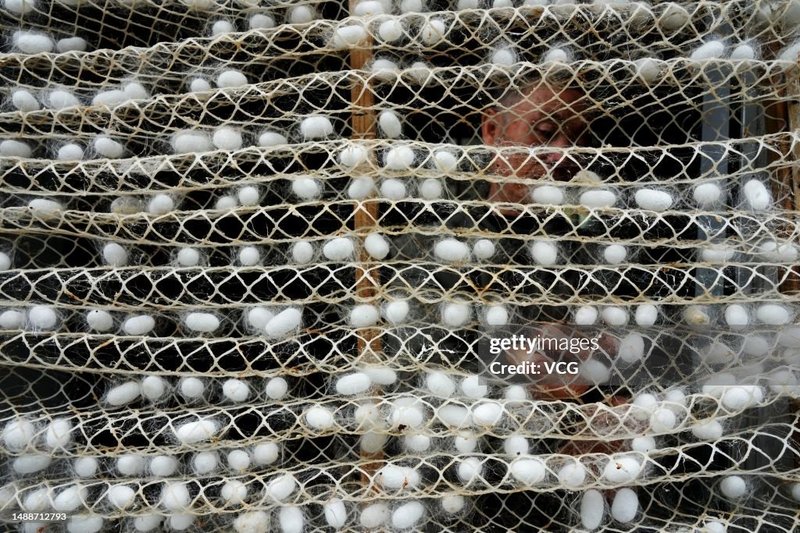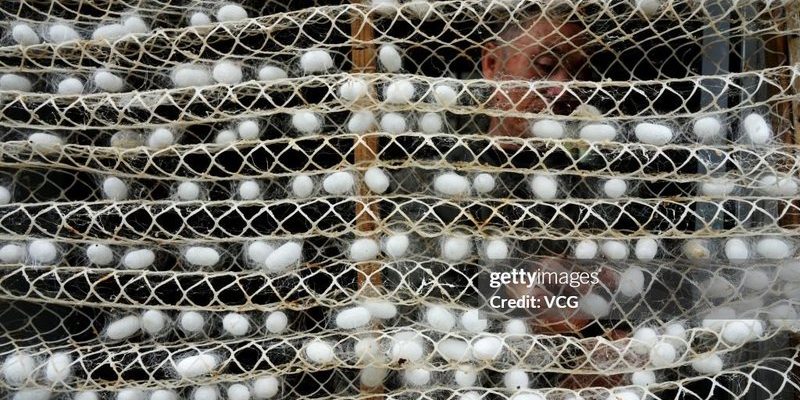
Just like a painter needs brushes and palettes, you need specific tools to handle and harvest silkworm cocoons properly. In this guide, we’ll explore the best tools available and how they can help you manage everything from the delicate harvesting to the careful handling of these beautiful cocoons. Whether you’re thinking about embarking on your silk-making journey or you’re already in the thick of it, I’ll walk you through the essential gear you’ll need.
The Importance of Harvesting Tools
When you think about harvesting silkworm cocoons, the first thing that comes to mind is the importance of having the right tools. Harvesting tools play a crucial role in ensuring that you don’t damage the cocoons, which can affect the quality of silk you produce. Using the right tool not only helps maintain the integrity of the cocoons but also makes the whole process easier for you.
You might be wondering, “What happens if I use the wrong tool?” Well, if you handle cocoons too roughly or with improvised tools, you risk breaking them. This mishap can lead to lower silk yields or even wasted efforts. So, gear up with the right tools, and you’ll find your experience much more enjoyable and productive.
Essential Tools for Harvesting Silkworm Cocoons
When it comes to harvesting silkworm cocoons, certain tools are non-negotiable. Here are some of the must-have items to consider:
- Scissors: A good pair of sharp scissors is essential for cutting cocoons from silkworm rearing trays.
- Collection Baskets: These help you gather your cocoons safely without damaging them.
- Gloves: Wearing gloves protects your hands and provides a better grip on the delicate cocoons.
- Harvesting Knife: This can be useful for more extensive harvesting tasks.
Let’s take a closer look at each of these tools.
Scissors
A pair of sharp scissors may seem simple, but it’s one of the most vital tools in your harvesting kit. Unlike ordinary scissors, those designed specifically for harvesting are often curved, which helps slice through the delicate threads of the cocoon while minimizing damage.
Picture trying to cut a rubber band with regular scissors—it just won’t work well! Scissors with a non-slip grip make it easier to handle the cocoons, ensuring that each cut is clean and precise. This level of care keeps your cocoons intact and maximizes your potential silk output.
Collection Baskets
When you’re working with fragile silk cocoons, having a sturdy yet gentle collection basket is essential. These baskets help prevent crushing and protect the cocoons during transportation. You might think any container would do, but using baskets designed for this purpose can make a significant difference.
Imagine carrying an egg in a shoebox versus a soft padded basket. The basket minimizes the risk of damage and helps you maintain the quality of the cocoons as you move them to the next stage of processing.
Handling Tools for Cocoons
Once you’ve harvested your cocoons, the next step is handling them properly. Certain tools come in handy here:
- Silk Reeling Machine: For those looking to extract silk from cocoons.
- Storage Containers: To keep cocoons safe until you’re ready to use them.
- Temperature and Humidity Monitor: Helps ensure they’re stored in the right conditions.
Let’s break these down further.
Silk Reeling Machine
If you plan to turn your cocoons into silk, a silk reeling machine is your best friend. While you can technically unravel silk manually, a machine makes it much more efficient and consistent.
Think of this as a sewing machine for silk; it allows you to reel out threads smoothly and evenly. The beauty of using a reeling machine is that it helps you maintain the quality of the silk, reducing waste and improving your final product.
Storage Containers
After harvesting, your cocoons need a safe place to rest. Storage containers should be breathable to avoid moisture buildup, which can lead to mold. You can use cloth bags or specially designed containers that let air circulate while protecting the cocoons from pests.
Imagine storing a loaf of bread in a sealed plastic bag versus a cloth one—the latter allows it to breathe and stay fresh longer. This principle applies to your cocoons too!
Best Practices for Harvesting and Handling
Having the right tools is just the start; you also need to follow some best practices for effective harvesting and handling. Here are a few tips:
- Harvest at the Right Time: Ensure cocoons are harvested at the right stage for optimum silk quality.
- Be Gentle: Always handle cocoons with care to prevent damage.
- Clean Your Tools: Keep your tools clean and sanitized to avoid contamination.
Let’s dive into why these practices are important.
Harvest at the Right Time
Timing is everything when it comes to harvesting cocoons. If you harvest too early, the silk may not be properly formed; if too late, the moth may have emerged, making the cocoon useless for silk production.
You should aim to collect cocoons when they are firm and have a uniform color, as this indicates they’re ready for processing. It’s a bit like waiting for fruit to ripen—you want it to be just right for the best results.
Be Gentle
Delicacy is key! Silkworm cocoons are incredibly fragile when freshly harvested. Handling them too roughly can cause damage, leading to holes or tears that ruin the silk.
Always approach your cocoons with a gentle touch. Think of it like holding a newborn bird; you want to support it without squishing it.
Maintenance Tools for Your Equipment
Now that you have all these tools, it’s important to take care of them as well. Here are a few maintenance tips:
- Sharpen Scissors Regularly: Keep your scissors sharp for efficient cutting.
- Clean the Silk Reeling Machine: Regular maintenance ensures smooth operation.
- Store Tools Securely: Keep your tools in a clean, organized space to prolong their life.
Let’s explore why maintenance matters.
Sharpen Scissors Regularly
Dull scissors can ruin the harvesting process. A sharp blade gives you the clean cuts you need, making the whole process smoother. Regularly checking your scissors and having a sharpening tool handy will help keep everything working its best.
It’s much like how a good knife is essential for cooking—if it’s dull, everything becomes a chore.
Clean the Silk Reeling Machine
Cleaning your silk reeling machine after each use ensures it stays functional. Dust and debris can hinder performance, making it less effective over time.
Think of it like cleaning your car; it not only looks good but also runs better with routine care.
Comparing Tools: Manual vs. Automatic
As you venture into the world of silkworm cocoons, you may also consider whether to go for manual tools or automatic machines. Here’s a quick comparison:
- Manual Tools: Great for small-scale operations, less expensive, and allows for a hands-on approach.
- Automatic Tools: More efficient for larger batches, often more costly, but saves time and labor.
Let’s weigh the options.
Manual Tools
If you’re just starting out or working on a smaller scale, manual tools can be a good fit. They help you get a feel for the process and are often more affordable. Just keep in mind they require more time and labor from you.
It’s like gardening with your hands versus using a tiller—both can produce great results, but one is more labor-intensive.
Automatic Tools
On the flip side, automatic tools can save a lot of time and effort. They are ideal for larger productions and can help with consistency.
However, they come at a higher cost and may require additional training to use effectively. For businesses aiming for higher outputs, investing in automation can be beneficial.
Final Thoughts on Silkworm Cocoon Tools
Harvesting and handling silkworm cocoons is an art and science. Equipping yourself with the right tools is just the beginning. From scissors and collection baskets to silk reeling machines, each tool plays a vital role in ensuring you get the best quality silk possible.
Remember, the journey from silkworm to silk is delicate and requires patience and care. Treat each cocoon with respect, and you’ll be rewarded with beautiful, luxurious silk. Whether you’re doing this as a hobby or considering a more serious venture, understanding your tools and their uses can make all the difference. Happy harvesting!

